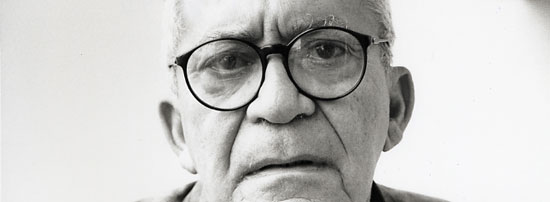
The rise of modern literature in Southern Brazil
10 August, 2010Highly influenced by immigrants from central and east European countries, the southern region of Brazil – comprised of Paraná, Santa Catarina and Rio Grande do Sul – has developed a very unique cultural scene. In the 1930’s São Paulo and Rio de Janeiro embraced art nouveau in a period where the country’s culture became what they call modern. However, from this date and for the next thirty years the southern states were developing a different and highly diversified culture of ‘urban’ novels.
The first iconic southern writer from that period was Érico Veríssimo from Porto Alegre – Rio Grande do Sul’s capital – who helped, inside his own state, to give a new perspective to literature, helping build fiction among the great writers of those effervescent days, as well as his own. Many of the stories were written with the huge change taking place in the cities themselves as backdrop, as they metamorphosed on their way to becoming industrialised metropolis. At that point, a new fictional figure appeared – the anti-hero – showing human characters who were swallowed by those modern cities. It was the beginning of a criticism, finding its apogee nowadays, regarding dehumanization of human kind. Rio Grande do Sul, as a state, had always been defined by its recalcitrance people. A big example of this being the War of Rags (in Portuguese: Guerra dos Farrapos), which was a revolt against the imperialist government of Brazil in nineteenth century. From that specific battle, a feeling of nationalism was born and grew as decades passed by; resulting in an almost district-nation willing to find new paths in culture and building their own identity. This might be the reason we see Brazil’s modern revolution in arts, which have always tried to create a regional identity and highlight local cultures, influencing their region’s customs so easily.
Meanwhile, in Paraná state, the modern art scene took longer to take shape; only really getting a foothold in the 1950s. It was driven by a feeling against provincialism, which was dominating all aspects of the culture. Some idealistic artists started a new modern revolution to remove the art from the official academies, facing great resistance as knowledge of modern art, regarding new styles and fresh techniques, were not available at all in this particular part of the country. All the famous authors of that time were disciples and enthusiasts of Alfredo Andersen (Alfred Emil Andersen), a great painting artist who came to Paraná’s coast, from Norway, in the nineteenth century. He influenced most areas of artistic creation, including literature; his revolving movement of art became an immaculate school for the upcoming generations of artists. His influence gave Curitiba (the state capital) a retrograde conventionalist culture still copying European traditions from the previous century. When the Journal “Joaquim” was created many great changes occurred in the literary scene; its editor became one of the most well-known writers of Paraná: Dalton Trevisan. It marked a shift in focus to social problems, which were now being discussed in artistic books; this new context broke the tradition of searching for perfect form in writing, placing the emphasis on Parana’s existing problems that were common to all modern societies.
As the sixties approached Santa Catarina showed its courage to fight the provincialism. This started, a couple of years before, with the creation of a periodic publication: a magazine called “Sul”. Its editor Osvaldo Ferreira de Melo Filho became the mentor of new ideas for that region in South Brazil. The magazine was published in Florianópolis (state capital), and Osvaldo published his writings, following the tradition of modernist poets, from Brazil’s southeast region, of the time.
One of the main obstacles for revolutionary introduction of modern concepts into literature in Santa Catarina was its division into, at least, three separate regions. This seperation occurred because of the diversity of traditions caused by uneven immigration scenarios; the shore was colonised by immigrants from the Island of Açores, where people had an economic subsistence crop way of life based mostly on handicraft and fishery; the southern area of Santa Catarina received Italians, Polish and German foreigners who started new colonies dedicating themselves to agriculture and coal industry; Teutonic-Brazilians from the extreme south, Italians and military troops colonized west region of the state that was officially regarded as national territory only from 1895. All of their diverse traditions made it almost impossible for new and fresh artistic approaches to thrive. So there was a big challenge faced by artists of that period, they had to create an identity for the region’s literature which was totally grounded in realism; the official style required by the state’s Academy of Letters (Academia Catarinense de Letras).
Recommended Reading
Érico Veríssimo:
1933 – Clarissa (His first novel)
1935 – Caminhos Cruzados (Received the Graça Aranha’s award)
1936 – As Aventuras do Avião Vermelho (His first children’s book)
1938 – Olhai os Lírios do Campo (one of his most important books)
1943 – O Resto é Silêncio (He was chased by the local catholic clergy in Rio Grande due to the content of this book)
Dalton Trevisan:
1959 – Novelas Nada Exemplares (Turned him into a household name. He won the Jabuti award and the National Book’s award for this)
1969 – A Guerra Conjugal (Adapted into a movie with the same name)
1985 – A Polaquinha (His only novel, all of the others were collections of short stories)
1992 – Em Busca de Curitiba Perdida (Nowadays it his most famous book and a requirement for many of the country’s public universities)
Follow Sounds and Colours: Facebook / Twitter / Instagram / Mixcloud / Soundcloud / Bandcamp
Subscribe to the Sounds and Colours Newsletter for regular updates, news and competitions bringing the best of Latin American culture direct to your Inbox.

